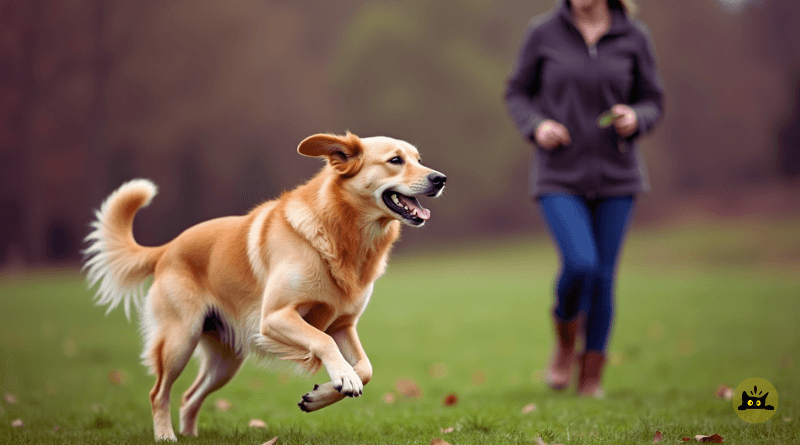Training your dog to come when called is more than just a basic training activity—it’s an essential part of dog recall training that significantly boosts your pet’s safety. A trustworthy recall command can really save your dog’s life by getting them away from danger fast. In this post, we explain why teaching your dog to come is so important and share proven, simple training tips to help your dog learn to always return when called.
Why Dog Recall Training Matters
Dogs have a curious nature and are naturally drawn to all kinds of sounds and sights. This curiosity sometimes leads them into dangerous places, such as busy streets or areas with risky animals. Teaching your dog to come when called tells them to steer clear of these dangers immediately. Not only does this habit help control your dog’s actions, but it also strengthens your relationship by making communication easier. Trusted groups like the American Kennel Club (AKC) and PetMD affirm that a regular recall is one of the most important parts of good dog training. In urgent moments, every second matters—quick responsiveness can prevent accidents and keep your pet safe no matter where they roam.
Easy Steps to Build a Strong Recall
Training your dog to come when called is a step-by-step process that takes time and practice. Here are some simple tips for building a strong recall habit:
• Start in a Quiet, Safe Space Begin in a calm indoor spot or a secure backyard. Call your dog in a friendly, clear voice, keeping the distance short so your dog feels comfortable and eager to join you. When they come right away, give them a quick treat or kind words immediately.
• Pick a Special Recall Word Choose one distinct word that means “coming to you” and use it exclusively for that purpose. Using a word that isn’t used for anything else makes it easier for your dog to understand what you expect. Stick with the same word every time so your dog knows exactly what it means.
• Use a Reward-Based Approach Each time your dog comes when called, reward them with a yummy treat or warm praise. This way, your dog starts to think of coming as a fun and rewarding habit. Regular rewards turn training into an enjoyable routine.
• Slowly Add More Distractions Once your dog is comfortable coming to you in a quiet spot, try practicing in different locations. Call them in parks, during walks, or amid everyday distractions. The trick is to practice often in various settings so your dog gets used to coming even when extra noise or activity is around.
• Keep It Consistent Make it a habit to call your dog throughout your daily routine—not just during training sessions. The more you practice, the more your dog understands that coming when called is always important.
Avoiding Common Training Mistakes
While building a good recall, keep these tips in mind:
- Do Not Use Scolding: Yelling at your dog when they don’t come can make them less likely to respond next time. Instead, stay calm and offer a treat or kind words to encourage a better response.
- Don’t Overuse the Command: Use the “come” command only when really necessary—like keeping your dog safe or needing them quickly—since repeating it too much may lead your dog to ignore your call.
- Don’t Depend Only on Leashes: Although leashes help in the early days, the goal is for your dog to respond without one. Practice in a safe, fenced area until your dog reliably comes on command.
Everyday Tips to Improve Recall
Here are some practical ideas you can use every day:
- Make It a Fun Game: Turn recall practice into a game. Hide around your house or yard and call your dog so they come and find you. This playful approach makes training fun for both of you.
- Give Quick Rewards: Timing is key! As soon as your dog reaches you, offer a quick treat or friendly praise. Quick rewards help your dog learn faster that coming to you is always a good thing.
- Practice in Different Places: Train indoors, outdoors, or in new areas with different noises. The more your dog experiences varied settings, the easier it becomes for them to come when called—even in unfamiliar surroundings.
- Stay Positive and Patient: Remember that each dog learns differently. Enjoy every little success, and when mistakes happen, use them as opportunities to improve your approach. Keeping a positive attitude and practicing regularly will strengthen your bond.
Extra Tips to Keep Training Fun
Sometimes mixing things up keeps both you and your dog motivated:
- Change Up the Game: Instead of always hiding in the same spot, try different locations to keep the game exciting and give your dog new challenges.
- Keep Sessions Short: Limit your training sessions to about 5 to 10 minutes so your dog stays interested and energized.
- Celebrate Success: Always celebrate small wins. A bit of extra praise or an extra treat for each success can greatly boost your dog’s enthusiasm and confidence.
By following these simple and proven steps, you ensure your dog stays safe, happy, and ready for any adventure. A strong recall habit not only prevents dangerous situations but also brings you and your dog closer together every day.
Check out another article that might interest you in this category : Smart Dog Stay Training Secrets Unleashed
Sources: PetMD

